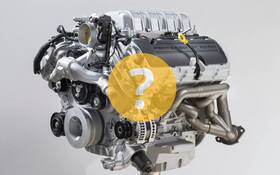How Can Identical Engines Have Different Power Ratings ?
I've noticed that some models of the same make but in different categories have engines with the same number of cylinders and displacement (for example, a 2-litre in-line 4-cylinder), but different power ratings. How can this be?
---------------------------------------------
- Also: 2024 Volkswagen Atlas and Atlas Cross Sport: More Refined Even With No V6
- Also: 2024 Hyundai Elantra is More Refined, N Sticks With Manual Gearbox
Hello Philippe,
The number of cylinders and the displacement of an engine cannot solely explain a difference in power output. First of all, you need to look at whether the engine is naturally aspirated or equipped with a forced induction device. When an engine is equipped with a supercharger or turbocharger, power and torque are higher. Yet the displacement remains the same.
For example, the base Hyundai Elantra comes with a naturally aspirated 2-litre inline-4. Power is rated at 147 hp and torque at 132 lb-ft. The same Hyundai Elantra, but in sporty N version, is also equipped with a 2-litre 4-cylinder. But it's turbocharged, and the specification sheet rates it at 286 hp and 289 lb-ft.

On the other hand, engineers always have to make choices and compromises when designing an engine. Whether a manufacturer is developing an economy car or a more radical sports car, the engine will obviously not be designed in the same way.
In an economy car, engineers will focus on low-end torque, and keeping fuel consumption as low as possible. For a sports car, engine designers might opt for sturdier internal parts and more advanced technology in order to enable the engine to rev higher and thus gain power and torque.
At Volkswagen for example, the turbocharged 2-litre 4-cylinder is very popular and used in several models, but with a wide range of power outputs:
Volkswagen Tiguan: 184 hp/221 lb-ft
Volkswagen Golf GTI: 241 hp/273 lb-ft
Volkswagen Golf R: 315 hp/295 lb-ft (with DSG gearbox)
This example illustrates the choices made by Volkswagen. The Tiguan's engine was developed with rationality in mind, while that of the Golf R was pushed to the limit, to give drivers more performance.











